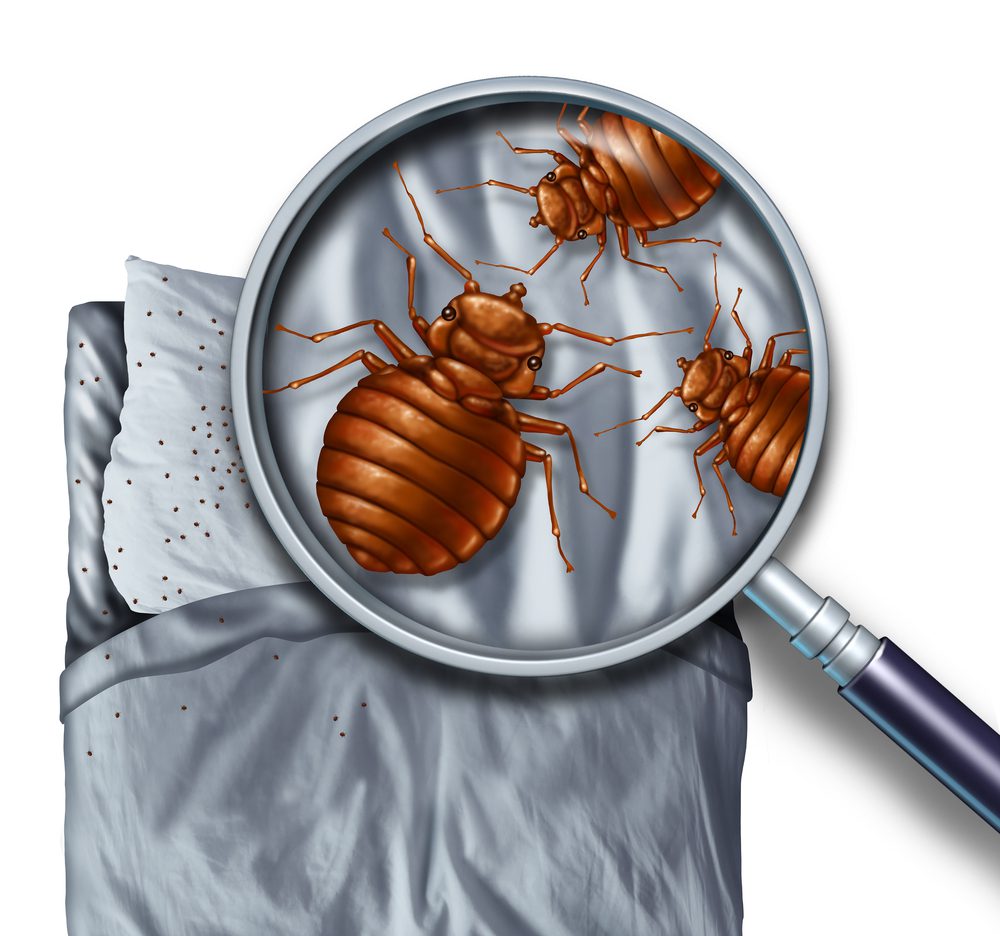Bed Bug FAQs
What are bed bugs?
Where are bed bugs typically found?
What are the signs and symptoms of a bed bug infestation?
One of the easiest ways to identify a bed bug infestation is by the tell-tale bite marks on the face, neck, arms, hands, or any other body parts while sleeping. However, these bite marks may take as long as 14 days to develop in some people so it is important to look for other clues when determining if bed bugs have infested an area. These signs include:
- the bed bugs’ exoskeletons after molting,
- bed bugs in the fold of mattresses and sheets,
- rust–colored blood spots due to their blood-filled fecal material that they excrete on the mattress or nearby furniture, and
- a sweet musty odor.
How do bed bug infestations start?
Bed bugs are experts at hiding. Their slim flat bodies allow them to fit into the smallest of spaces and stay there for long periods of time, even without a blood meal.
Bed bugs are usually transported from place to place as people travel. The bed bugs travel in the folds and seams of clothing or bedding, and in the crevices of overnight bags, luggage, personal items, and anywhere else where they can hide.
Most people do not realize they are transporting stow-away bed bugs as they travel from location to location, infecting areas as they travel.
How are bed bug infestations treated?
There are a number of ways bed bug infestations can be treated. The most common methods are the use of insecticides and heat.
Insecticide treatments typically involve the use of three different types of chemicals:
- A fast-acting contact insecticide is used on frequently touched surfaces to quickly kill bugs.
- A slower-acting residual insecticide is used to kill surviving bed bugs over time. It’s applied to surfaces that aren’t touched as frequently by humans.
- A dust insecticide is applied to cracks and crevices that are harder to reach.
Heat treatments typically involve raising the temperature of infested areas and items to levels that a fatal to bed bugs (>118°F) for sustained periods of 90 minutes or more using specialized equipment like whole-room heaters, hot boxes, and commercial steamers.
What are the drawbacks of bed bug treatments?
Once your home, office, or facilities is infested with bed bugs, treatment my a pest management professional will be required. No matter which treatment option you choose, there will be drawbacks:
- Expensive – The cost of treating a bed bug infestation will vary widely based on the severity of the infestation, the market, the size of the area being treated, and the bed bug treatment method–ranging from several hundred for a small, isolated infestation to several thousand dollars for larger areas.
- Disruptive – Regardless of the treatment method used, bed bug treatments are generally disruptive to your operations. There will typically be a lot of work that goes into preparing the area for treatment, a need to vacate the area, and follow-up work you’ll need to complete to reduce the chances of re-infestation.
- Potentially Ineffective – Neither chemical treatments nor heat treatments of infestations are 100% effective. Insecticides commonly used in treating bed bugs don’t kill eggs, necessitating at least one follow-up treatment to reduce the risk of re-infestation. Additionally, if insecticides are not applied correctly, they can actually cause bed bugs to spread to other areas of your facilities. Heat treatments are generally much more expensive and could damage property if not properly controlled.
- Untimely – By the time you realize you have a bed bug infestation, it’s likely that bed bugs have already hitched a ride on some unsuspecting visitors or staff members to other locations. The bed bugs can then infest their homes. Those visitors and staff members can then reinfest your facility days, weeks, or months after you’ve spent thousands of dollars treating the initial infestation.
For these reasons, the best solution is to prevent infestations in the first place.
How can I prevent a bed bug infestation at my facilities?
The best to prevent bed bug infestations at your facilities is by proactively heat treating high-risk clothing and personal belongings being brought into your facilities using a “hot box” (like The Bed Bug Oven™).
You can greatly reduce your risk by establishing procedures for:
- Heat treating clothing and personal belongings during intake.
- Heat treating used bedding on a regular basis.
Additionally, you should establish procedures for
- Regularly inspecting mattress and sleeping areas for bed bugs.
- Responding to bed bug sightings.
- Communicating these procedures to staff.

